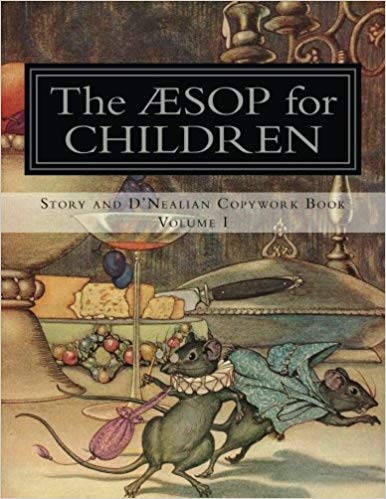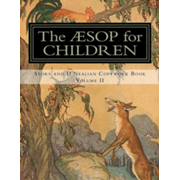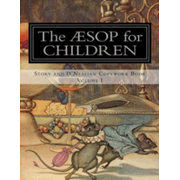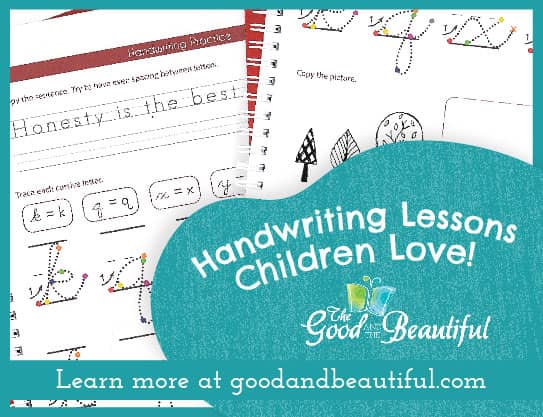The Aesop for Children: Story and D’Nealian Copywork Book, Volume I and Volume II feature Aesop’s fables followed by copywork. These should be useful for children in first through third grade. They should serve particularly well for those using Charlotte Mason or classical approaches to education.
Both volumes include the entire, unabridged fables rather than excerpts. There are 73 fables in the first volume and 74 in the second. One or more lovely, hand-drawn illustrations by Milo Winter accompany most of the fables.
The copywork for each lesson consists of one selected sentence from the fable, shown in D’Nealian style printing as a model. (D’Nealian is a slanted form of printing that simplifies the transition to cursive.) Beneath each model are well-spaced lines for students to copy the sentence in their best handwriting. These copywork books do not teach letter formation, but you can get free letter formation charts from thisreadingmama.com. Copywork serves as handwriting practice, but it also builds a foundation for grammar, writing, and vocabulary as students become familiar with interesting and well-written sentences.
The fables will probably need to be read aloud to most children since the vocabulary and sentence structure is more difficult than what first and second graders are generally reading. While parents might need to supervise or assist children with the copywork at first to make sure they do it properly, children should soon be able to copy the sentences independently.
Aesop’s fables are wonderful teaching tools in their own right since they provide wonderful fodder for discussion. Parents should take advantage of the opportunity to explore the fables with their children, rather than jumping straight into the copywork.












